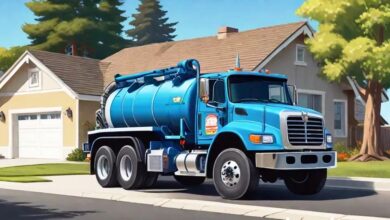Low Rise Tilt Lift: Ultimate Guide to Efficient Lifting and Handling Solutions
Maximize Efficiency and Safety with Low Rise Tilt Lifts: A Comprehensive Guide for Modern Material Handling Needs

Introduction to Low Rise Tilt Lift
A low rise tilt lift is an invaluable tool in industries where efficient loading, unloading, and material handling are essential. From automotive repair shops to retail stocking operations, these lifts make it easier to manage heavy loads by allowing a platform to rise to a low height while tilting for optimal accessibility. This unique tilt function sets low rise tilt lifts apart from standard lifts, enabling users to move objects more ergonomically and safely.
The technology behind compact tilt platform lift is straightforward yet highly effective. The lift platform rises only a short distance from the ground, providing a low-profile option for materials that need to be elevated just enough for ergonomic access. These lifts are designed to handle various weight capacities, making them versatile enough for different industries. In this blog, we’ll explore the different types of low rise tilt lifts, their applications, key benefits, and factors to consider when choosing one for your needs.
What is a Low Rise Tilt Lift?
Definition and Key Components
A low rise tilt lift is a specialized lifting device that allows for slight elevation and tilting of heavy loads, making it an ideal solution for loading, unloading, and handling tasks in various industries. Unlike conventional lifts that raise items to significant heights, compact tilt platform lift are designed to keep loads close to the ground, reducing strain on operators and facilitating safer access.
A typical compact tilt platform lift consists of several core components:
- Platform – The surface where loads are placed, designed to withstand heavy weights and tilts at various angles for ergonomic access.
- Hydraulic or Electric System – Powers the lifting and tilting actions, providing controlled movements to ensure stability and safety.
- Safety Controls – These include emergency stop buttons, load-locking mechanisms, and anti-slip surfaces to protect operators during use.
How Compact Tilt Platform Lift Works
The primary function of a tilt lift is to provide easy and safe access to heavy loads by lifting them slightly and tilting the platform as needed. Operators load items onto the lift’s platform, then adjust the height and tilt angle using control buttons. The platform’s low rise feature makes it highly accessible, especially for jobs where raising loads to significant heights isn’t necessary. This setup is particularly useful in automotive repair, where accessing a vehicle’s undercarriage at a manageable height is crucial.
Types of Low Rise Tilt Lift
Portable Low Rise Tilt Lift
A portable compact tilt platform lift is designed for flexibility, enabling operators to move the lift around a workspace as needed. These models are generally lighter and have wheels for mobility, making them ideal for temporary work sites or areas where multiple stations require lifting assistance. The portable feature is particularly useful in environments like retail, where space is limited, and lifting needs vary.
Fixed Low Rise Tilt Lift
Fixed low rise tilt lifts are installed in a specific location, providing a permanent solution for industries that frequently use lifting equipment in a designated area. Fixed lifts tend to offer higher weight capacities and greater stability, as they are anchored securely to the ground. Common in warehouses and automotive repair facilities, these models are built for high-frequency, heavy-duty applications.
Hydraulic vs. Electric Models
Low rise tilt lifts come with either hydraulic or electric mechanisms. Hydraulic compact tilt platform lift use fluid power to raise and tilt the platform, offering smooth and powerful lifting even under heavy loads. Electric low rise tilt lifts, on the other hand, use motorized systems that are quieter and may require less maintenance. Both types provide excellent performance, and the choice between hydraulic and electric depends on the specific needs and preferences of the facility.
Key Benefits of Tilt Lift
Ease of Access and Loading
One of the primary advantages of a low rise tilt lift is its ability to improve access to heavy items. The tilting feature allows users to reach different angles, facilitating efficient loading and unloading processes. This ease of access is crucial in settings like retail and warehousing, where heavy products need to be moved quickly and safely.
Enhanced Safety for Operators
By keeping loads close to the ground and providing tilting options,compact tilt platform lifthelp prevent common workplace injuries associated with heavy lifting. These lifts promote ergonomic movement, reducing strain on the back, shoulders, and arms. In industries like automotive service, where workers frequently access hard-to-reach parts,compact tilt platform lift are essential for maintaining a safe and comfortable working environment.
Versatility Across Industries
A low rise tilt lift can be used across a wide range of sectors, from automotive repair to retail stocking. In automotive garages, it helps lift vehicles or parts for repairs; in retail, it assists with organizing and displaying inventory. This versatility makes low rise tilt lifts an excellent investment for businesses that require adaptable and efficient material handling solutions.
Applications of compact tilt platform lift
Automotive Service and Repair
In the automotive industry, compact tilt platform lift are invaluable for vehicle maintenance. These lifts allow mechanics to access various parts of a vehicle without needing to fully elevate it, making it easier to perform repairs on tires, brakes, and other components. The tilt function offers enhanced visibility and reach, which is essential for diagnosing and fixing issues efficiently.
Warehousing and Logistics
Warehouses and distribution centers often rely on low rise tilt lifts for handling inventory. These lifts aid in loading and unloading products from storage shelves, minimizing manual handling and increasing productivity. The tilting feature is especially useful for accessing items that are otherwise difficult to reach, streamlining the process of order picking and packing.
Retail and Stocking Operations
In retail settings, a low rise tilt lift is a practical tool for moving and displaying inventory. Store employees can easily adjust products on shelves or tables without straining themselves, ensuring that items are displayed neatly and safely. This is particularly beneficial for large retail chains, where frequent stocking and organization are required.
Factors to Consider When Choosing a low-profile tilting lift Lift
Load Capacity Requirements
Choosing a low-profile tilting lift that meets your weight requirements is critical. Different models offer varying load capacities, so it’s essential to assess the weight of items that will be lifted frequently. Exceeding the load limit can lead to equipment damage and pose safety hazards.
Space and Mobility Constraints
The size and layout of your workspace play a significant role in selecting the right low rise tilt lift. If space is limited, a compact or portable model may be more practical. For larger spaces, fixed models may provide greater stability and load capacity. Evaluating the mobility needs in your workspace will help you choose between portable and stationary options.
Safety Features
Ensuring that your low rise tilt lift is equipped with essential safety features, such as load locks, emergency stop buttons, and anti-slip platforms, is crucial. These features help prevent accidents, especially in high-traffic or high-stakes work environments like automotive and warehousing industries.
How to Operate a Low Rise Tilt Lift Safely
Basic Operation Steps
Operating a low rise tilt lift is generally straightforward. Start by placing the load on the platform, making sure it is secure and within the load capacity. Adjust the height and tilt angle as needed, using the control buttons. Once the load is in the desired position, ensure it is stable before proceeding with any handling or adjustment tasks.
Maintenance Tips for Longevity
Regular maintenance is essential for keeping a low-profile tilting lift in optimal working condition. This includes checking the hydraulic or electric components for any signs of wear, cleaning the platform, and lubricating moving parts as necessary. Proper maintenance extends the life of the equipment and ensures safe, reliable operation.
Common Safety Precautions
To avoid accidents, operators should follow basic safety precautions. This includes wearing protective gear, securing the load before lifting, and ensuring that the area around the lift is clear of obstacles. Following these precautions helps prevent injuries and protects both operators and equipment.
Top Brands Offering Low Rise Tilt Lift Models
There are several leading brands known for high-quality low-profile tilting lift models. Here’s an overview of a few prominent options:
- Brand A: Offers portable models with excellent durability and ease of use, ideal for retail and light warehouse applications.
- Brand B: Specializes in heavy-duty fixed lifts, known for their reliability in industrial settings.
- Brand C: Provides both hydraulic and electric options with a focus on advanced safety features, catering to a wide range of industries.
Choosing a reputable brand ensures that you get a low rise tilt lift that meets safety standards and delivers long-lasting performance.
Cost Considerations for low-profile tilting lift
Pricing Range for Different Models
The price of a low rise tilt lift can vary significantly based on factors like load capacity, brand, and features. Portable models are generally more affordable, while high-capacity, fixed models with advanced safety features are on the higher end of the pricing scale. Evaluating your needs and budget can help you find the right model.
Return on Investment (ROI) in Commercial Settings
Investing in a low-profile tilting lift can provide a substantial return on investment by increasing productivity and reducing labor costs. By streamlining loading and unloading processes, businesses can save time and minimize physical strain on employees, leading to higher efficiency and lower healthcare costs associated with workplace injuries.
Conclusion
A low rise tilt lift offers a versatile and efficient solution for industries that require regular handling of heavy or bulky items. With its unique ability to elevate and tilt loads for easy access, this lift enhances safety, reduces strain, and increases productivity in various settings. Whether you need it for automotive repairs, warehousing, or retail operations, a low-profile tilting liftt can be tailored to meet your specific needs.
Choosing the right low rise tilt lift involves assessing factors like load capacity, space constraints, and safety features. With options ranging from portable to fixed and hydraulic to electric, there’s a model suited to every application. For businesses seeking to improve efficiency and maintain a safe work environment, investing in a low rise tilt lift is a practical and worthwhile decision.
Read Previous Article: FXD Work Boots





